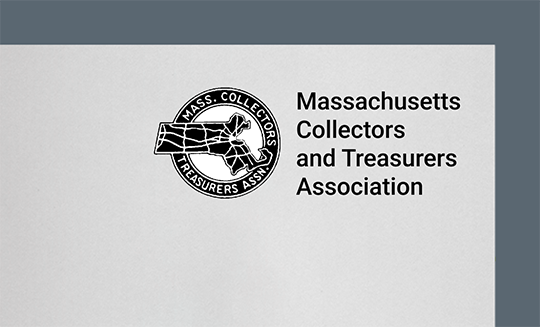Simple yet effective tips to help you hold efficient virtual board meetings now and into the coming year.
Do you sometimes feel like you’re living in a world of Zoom meeting overload? I know I do. And it’s safe to say that your board members feel the same way.
 Tirrah Switzer, Product Marketing Manager, Momentive Software
Tirrah Switzer, Product Marketing Manager, Momentive Software
A meeting that has no direction can be unproductive and annoying – especially when the meeting is after hours for your “volunteer” job. Here are six simple yet effective tips to help you hold efficient virtual board meetings now and into the coming year.
1. Always have an agenda.
Your board members are volunteering their time, and that time should be valued. Preparing an agenda (and sticking to it) is crucial for an efficient board meeting. You should match the length of the agenda to the length of the meeting. Don’t overload or underload the agenda. With virtual meetings, you might consider a few less agenda items as online meetings typically require repetition and clarification. The agenda should be focused on topics that support your organization’s strategic goals. (Learn more in #4).
Preparing an agenda is crucial for an efficient board meeting.
2. Start on time.
Your agenda has a start time. Stick to it. Most of your board members have “real” jobs and busy lives, which sometimes means they’ll run late. Don’t feel as if you have to wait for everyone to login before starting the meeting. If you continuously push back your meeting start time, you’ll encourage board members to arrive later and later.
When you start every meeting on time, you convey the importance of punctuality. You also show board members and guests that you value their time.
Don’t feel as if you have to wait for everyone to login before starting the meeting.
3. Send materials in advance.
Make sure you send out any materials at least five days ahead of the meeting. Items such as the agenda, minutes from previous meetings, financial statements, membership reports, staff reports, and any other documents can be sent to board members prior to the meeting.
Good board members know their responsibilities and will read what you send them. Assume board members did their homework and reviewed the updates. This will make the meeting more productive by allowing more time for strategic discussions.
Good board members know their responsibilities and will read what you send them.
4. Focus on strategic discussion but also allow for personal time.
We’re all busy. Your board members are no different. Wasting time with a board meeting that doesn’t provide value frustrates your board members. The last thing you want your board members thinking is “I wish I were anywhere but here right now.” It does nothing to help move your organization forward.
Your board’s job is to help move your mission forward through governance and strategy. Make your board meetings about strategic discussions and decisions. Non-controversial or routine items can easily be reviewed via email prior to the meeting.
With today’s changing times, allow for personal time during your board calls. Taking time to recognize how everyone is navigating through the changing times, will provide your board with support and help build community.
Here are a few suggestions that can go a long way with your new board:
- Ask them how their organization is handling the “new normal”
- What challenges are they facing at their organization?
- How have the changing times impacted their family?
Allowing personal time can go a long way with your board.
5. Prepare any proposals well in advance.
When you have a new proposal for the board, be sure to prepare in advance. For example, if you’re working to convince your board that it’s time for new technology for your organization, consider these tips:
Recruit a few supporters. Before you make the ask to the entire board, it helps to have a few supporters in your corner. Introduce the idea of new technology to individual board members first. If more than one person recommends the investment, the rest of your board will be more likely to be convinced. Especially since the recommendation will be from a peer that they know and trust.
BONUS TIP: Recruiting board members ahead of the meeting will prepare you for any questions other board members might have. You will know ahead of time any specific information and questions to include in your pitch to the board.
Make the pitch. The main event of convincing your board will be your pitch. Make sure it’s persuasive. Your board members joined the board to help your organization further your mission, and if this is a step they need to take, they will. The case just needs to be compelling. Be sure to include the following in your pitch:
- Explain the problem with the current technology.
- Highlight the benefits and ROI of a new solution.
- Outline the costs and timeline of a new solution.
- Show examples of what your new solution could look like.
BONUS TIP: Need help putting together your presentation for new technology? Ask your technology vendor of choice for help, such as a prepared PowerPoint presentation (you can download a template for your board here). Your technology vendor should be able to provide you with best practices and examples of what your new solution can look like.
Anticipate questions.
When you’re asking your board for funding for a new project, your board will have questions. And, they’re going to want answers. You invested time in recruiting advocates and developing a persuasive pitch, now it’s time to think like a board member. If you were a board member, what questions would you have after listening to your presentation? What questions did your recruited supporters ask? The more prepared you are with data, the more likely you will gain approval.
6. Offer vision and inspiration.
Your board members are there because they believe in the mission and vision of your organization. Try to book-end your meetings with mission, vision, and inspiration to keep the board connected with your organization’s purpose.
You can incorporate your mission through small things. For example, display your mission and vision statement on your opening slide. You could also ask a new member to give a testimonial about why they joined. Or ask a program attendee to relay the professional benefits they received from an educational course.
Just make sure your board members leave inspired and deeply connected with your vision. Don’t let them leave a meeting focused on how much you’re going to spend on post-it notes this year.
Make sure your board members leave inspired and deeply connected to your vision.
Your board meetings can be one of your greatest assets or one of your biggest headaches. Start planning now, and use these virtual tips to have successful virtual board meetings in 2020.
 |
Watch the on-demand webinar with Tirrah Switzer on how to convince your board to keep (or secure) your technology budget. |
Interested in learning more about getting your board on board? Here are a few additional resources:






